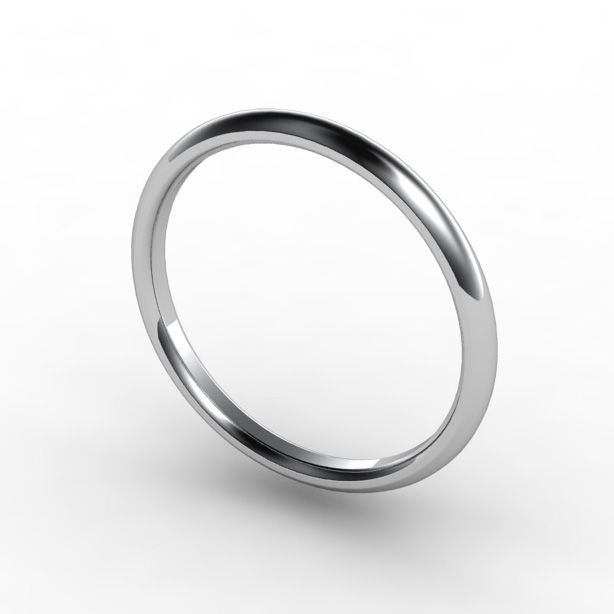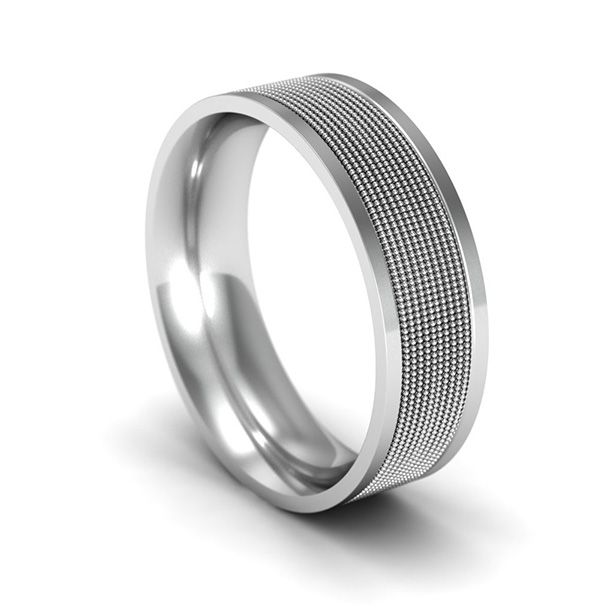How Wedding Rings are Made
Have you ever wondered what goes into making a wedding ring? How those shiny, sparkling objects that end up glistening inside a jewellers window, and then with any luck on your finger, actually arrive there? The answer is of course that it varies hugely, as there are as many different types of wedding ring as there are types of rings! For the curious, here is a quick guide to the kinds of processes involved in making popular types of wedding rings available today, to help you feel better informed when making one of life’s most important jewellery purchases.
The Classic Wedding Band
 In years gone by a ring would have been forged through repeatedly hitting the metal to force it into the correct shape, keeping it incredibly tough and dense all the way through. Nowadays, this process is mirrored with powerful machinery. A band will start life as a piece of metal bar, such as gold or platinum, and then, using extreme amounts of pressure, a bending machine will force it into the circular shape of the desired size.
In years gone by a ring would have been forged through repeatedly hitting the metal to force it into the correct shape, keeping it incredibly tough and dense all the way through. Nowadays, this process is mirrored with powerful machinery. A band will start life as a piece of metal bar, such as gold or platinum, and then, using extreme amounts of pressure, a bending machine will force it into the circular shape of the desired size.
The band is then closed up to create a complete circle, soldering the point where the ends meet using a filler of the same material. A substance called flux paste is used to prevent oxidisation and discolouration under the high temperatures required for soldering, after which the ring will be dipped in a weak acidic solution to gently erode any excess flux and even out the band. After some polishing and buffing, the ring will then be fit for your finger! Because the design options with this process are limited, this is one of the most popular methods of creating the simple, classic wedding band.
Another method, called casting, allows for the creation of more complex designs. Casting means that molten metal is poured into a mould, which would traditionally have been hand carved but is these days usually designed using a computer. In recent years Computer Aided Design has changed the face of the jewellery industry, allowing highly complex designs to be implemented at a fraction of the labour costs. This has also opened up a whole new world of bespoke and personalised jewellery, and the incredible option now open to many couples of designing their own wedding ring!
After being poured into a mould the metal is plunged into cold water to cool it instantly. A quality control check will soon occur at this point to check the ring for porosity, meaning tiny air bubbles that might have appeared during the casting process, which can leave the metal somewhat weak. Machine bent and traditionally forged bands usually make for a much denser, and therefore much more durable, ring.
Plating
White gold rings are typically plated by applying a microscopic layer of rhodium, to give them their bright white sheen, but really almost any ring you like can be plated in order to keep the metal smooth, shiny and resilient for as long as possible. You can also have your ring re-plated if it begins to look scratched or worn, as no metal is completely immune from exposure to the trials of everyday life!
Designs and Features
 A plain band of metal is still, by far, the most popular choice for a wedding ring. Perhaps for this very reason, however, many people will opt for some form of personalisation which will require further steps in the manufacturing process. This might be a pattern etched into the metal, the embedding of precious stones such as diamonds, or an engraved message. A popular choice is to have diamonds set into the metal in various designs, but a much cheaper alternative to diamonds is cubic zirconia stones, which have a very similar visual effect!
A plain band of metal is still, by far, the most popular choice for a wedding ring. Perhaps for this very reason, however, many people will opt for some form of personalisation which will require further steps in the manufacturing process. This might be a pattern etched into the metal, the embedding of precious stones such as diamonds, or an engraved message. A popular choice is to have diamonds set into the metal in various designs, but a much cheaper alternative to diamonds is cubic zirconia stones, which have a very similar visual effect!
Engraved wording is one of the most traditional yet still popular design features available for a wedding ring. A romantic practice that can be traced back to medieval roots, engraving the name of your partner on the inside of a wedding band is to ensure you and your beloved will always be in contact. Rings these days can either be hand engraved, machine engraved or laser engraved, processes which will be more or less appropriate depending on the style you go for and the type of metal you choose. Machine engraving can be used with gold, platinum and palladium, but with some metals, such as tungsten, titanium and zirconium, it is necessary to laser engrave due to their extreme toughness.
So, whatever style or design appeals to you and your partner the most, there are a huge variety of modern, traditional and combined practices available today to create you a ring that is exquisite and unique enough to last you both a lifetime!
